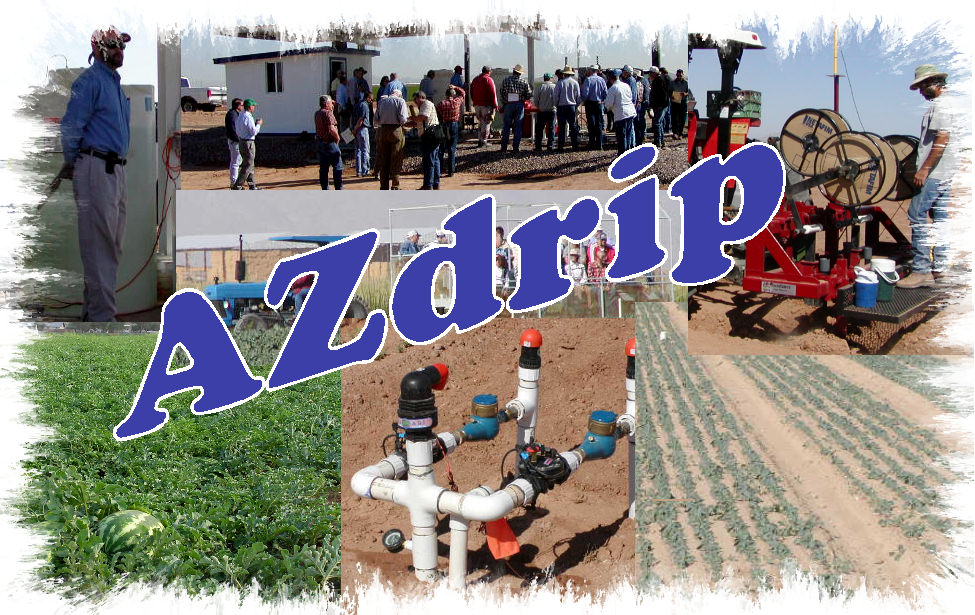
Subsurface
Drip Irrigation
Demonstration and Research Project
and Environmental Science
 |
The
University of Arizona |
| Subsurface
Drip Irrigation |
|
|
Department
of Soil, Water, and Environmental Science |
| Cotton Harvested: 10/05/2007 |
Plot configuration
|
||||||||||
In the fall 2005 increased weed pressures within the SDI plots as a result of poor weed control in adjacent fields became apparent. Prior to this time weed control within SDI plots was excellent. Due to increasing weed pressures and persistent volunteer barley from the 2005 season we decided to incorporate a Roundup Ready flex variety of cotton into our rotation in the spring of 2007. Selection of this crop allowed a wider window of opportunity for chemical weed control than could be achieved with any other crop and allowing us to successfully regain control of the weeds in the SDI plots. Moderate weed suppression was achieved in the furrow plot. Total water use during the 2007 season (Figure 1) was much higher than expected with SDI as a result of difficulty subbing water from the buried drip tape up to the seed for germination. Over time as the amount of crop residue in the soil has increased the soil in the SDI plots have become fluffier and less compact. While the overall soil tilth has increased the amount of water required to sub water to the surface during germination has increased as well. Therefore, beds were compacted with an 80 inch bed roller in hopes this would help with water movement to the surface. Despite this, as much as 19 “ was needed to germinate the crop in the SDI plots versus just 7 “ in the furrow plot. It is believed that this initial water requirement could have been reduced if we had furrowed out each seed line 3 - 4" and planted at the bottom of these shallow furrows. Ordinarily, with high-dollar crops sprinklers would be used to germinate the crop, eliminating this problem. This added expense, however, would not normally be practiced on a crop like cotton. In season water use under SDI (Figure 2), however, was less than or equal to that of furrow. Cotton was harvested in October 2007 showed remarkable yields of 5.2 bales/ac under HF SDI. LF SDI had yields of 4.0 bales/ac (80" beds) and 3.2 bales/ac (40" beds) compared to 3.2 bales/ac for furrow irrigation (Figure 3, Table 2). HF plots yielded an average of 60% more lint than surface irrigated plot, while the LF plot on an 80" bed with 2 drip lines yielded 21% more lint. WUEs were 36-64% higher for HF SDI and 15-31% higher for LF SDI compared to surface irrigation (Figure 4). |
|||||||||||
|
|
Search
AZdrip and ACIS
|
For comments and questions regarding the AZdrip site contact: webmanager